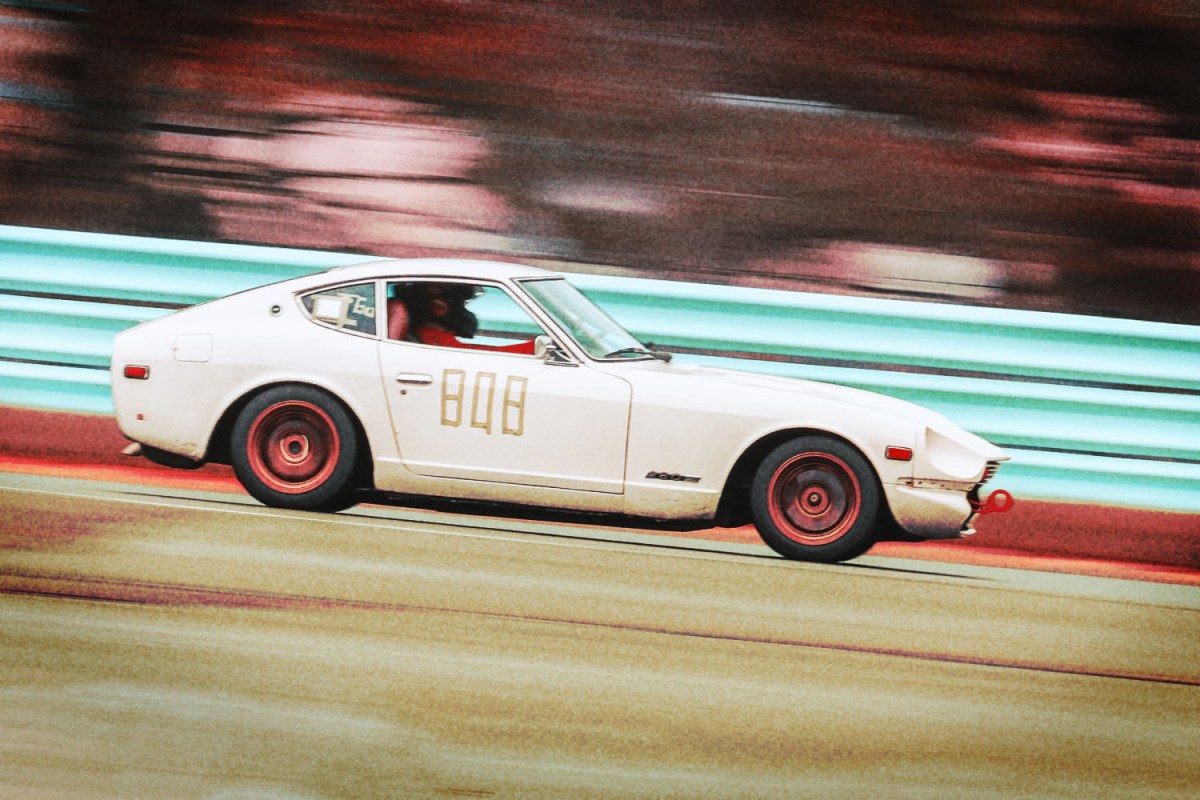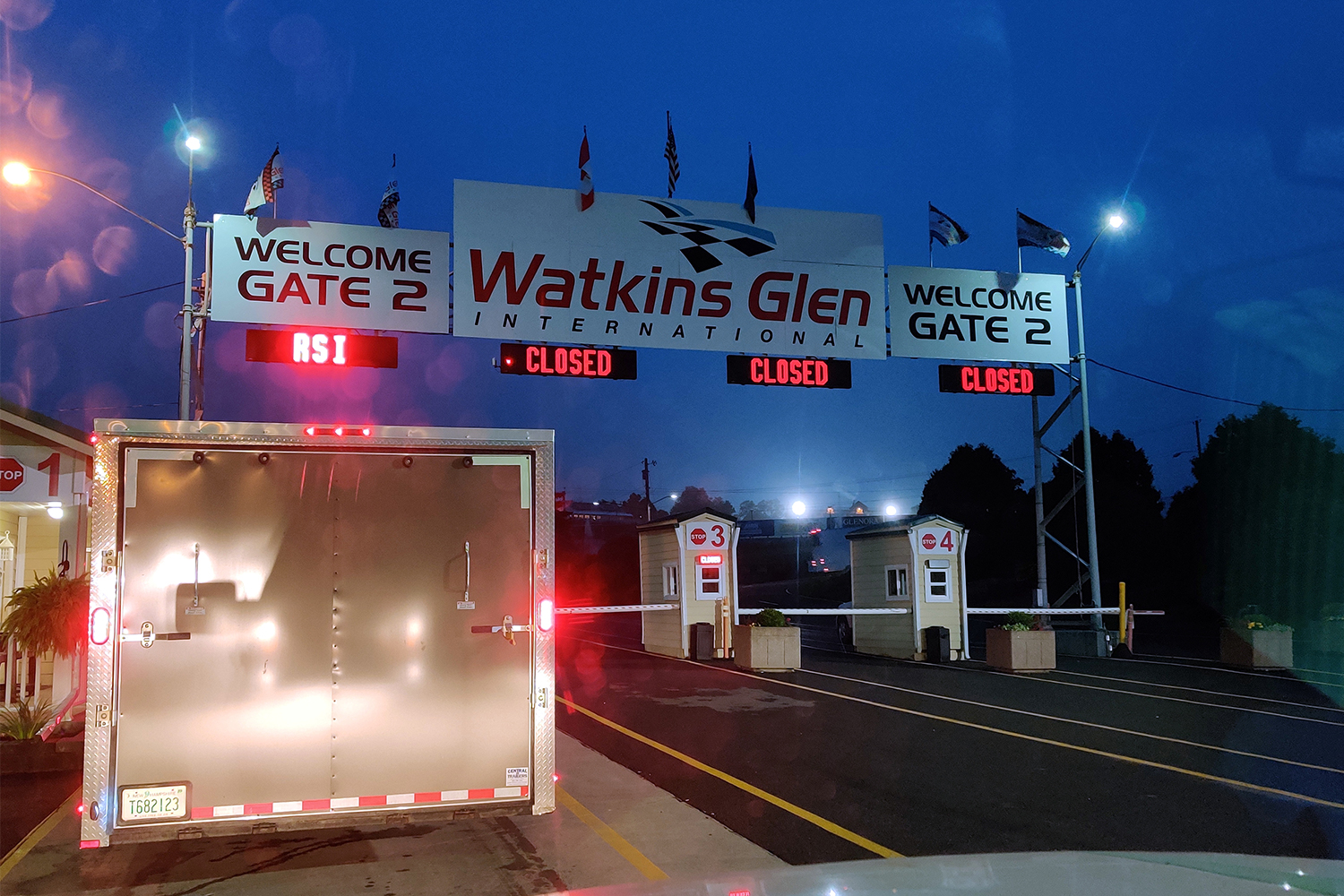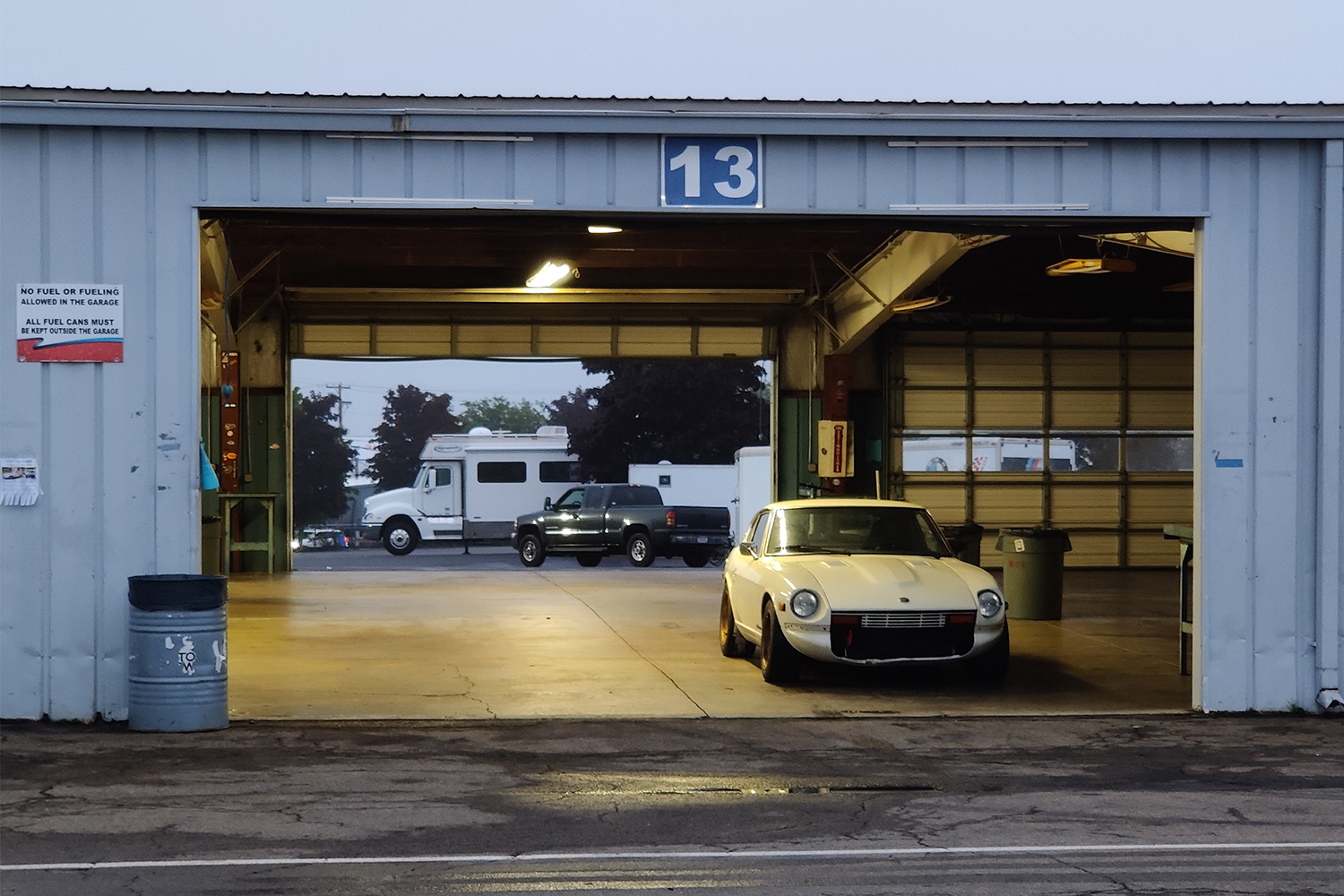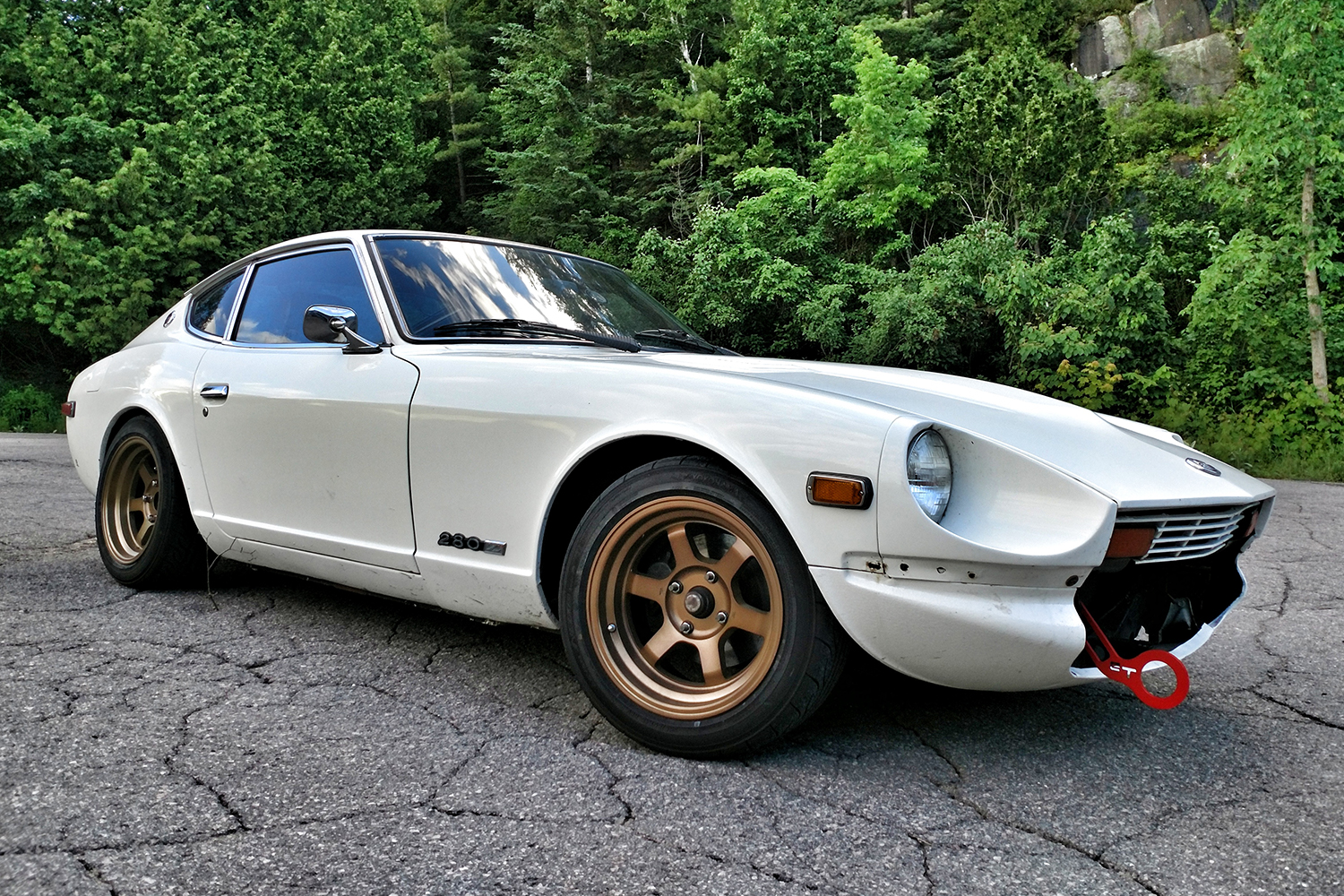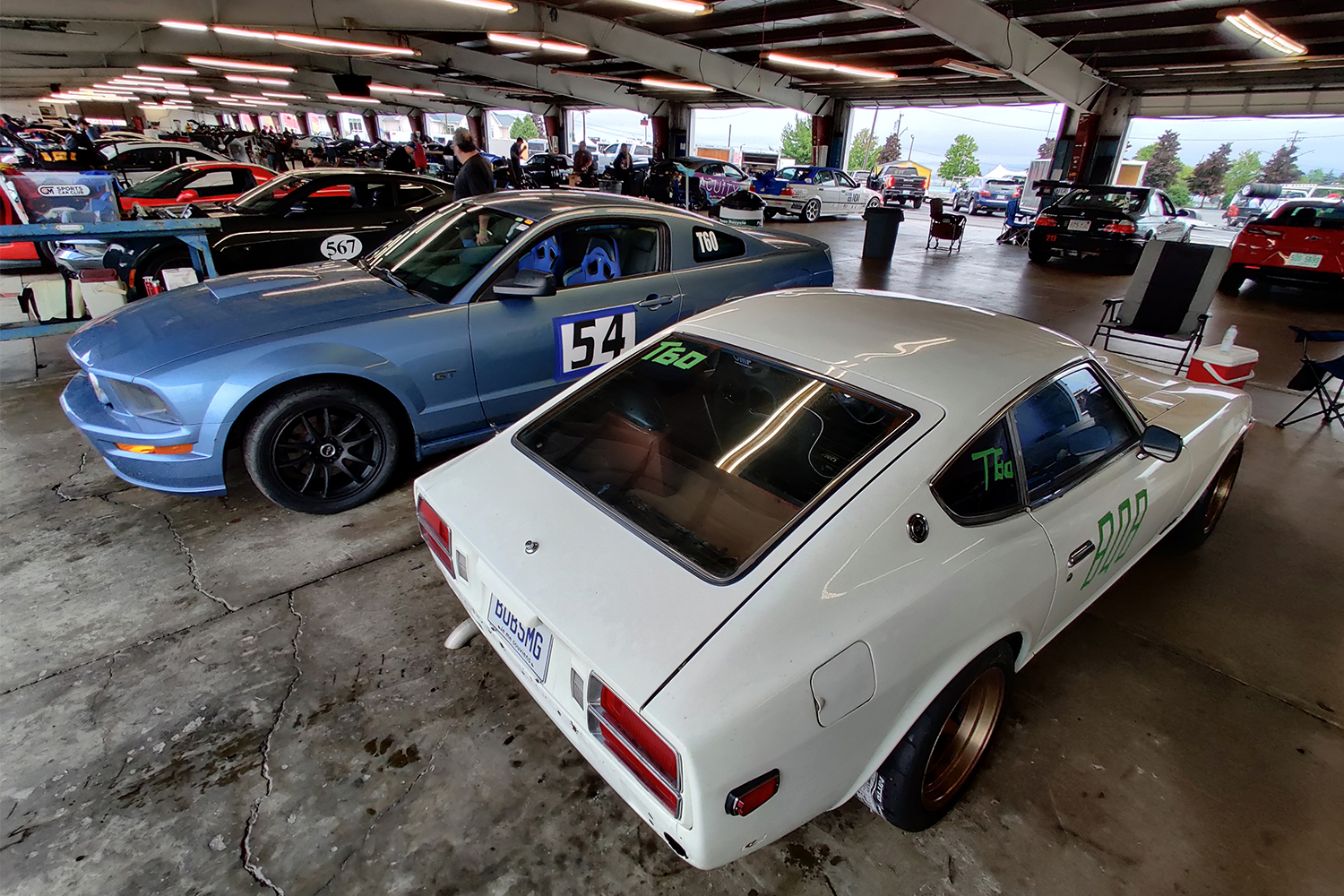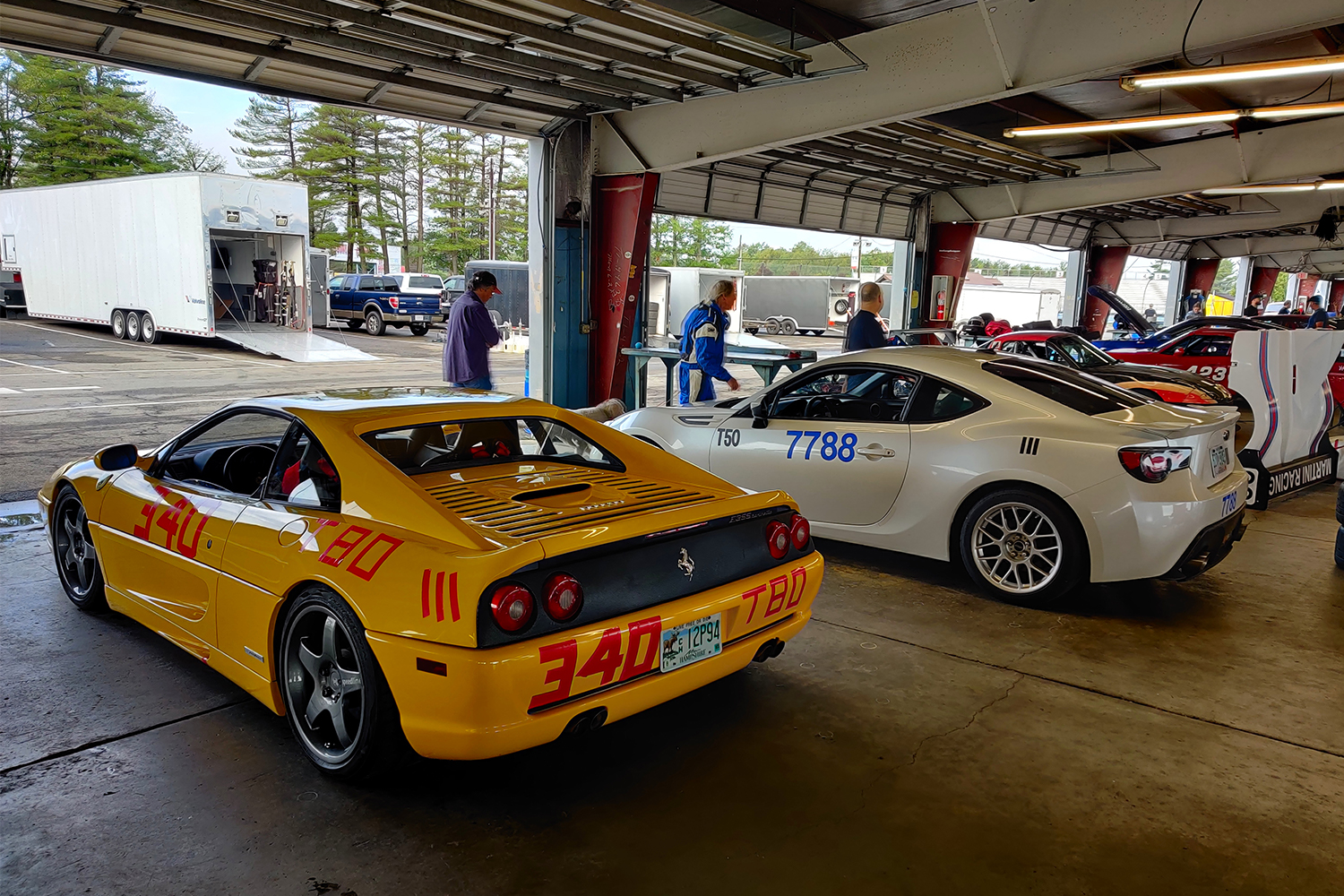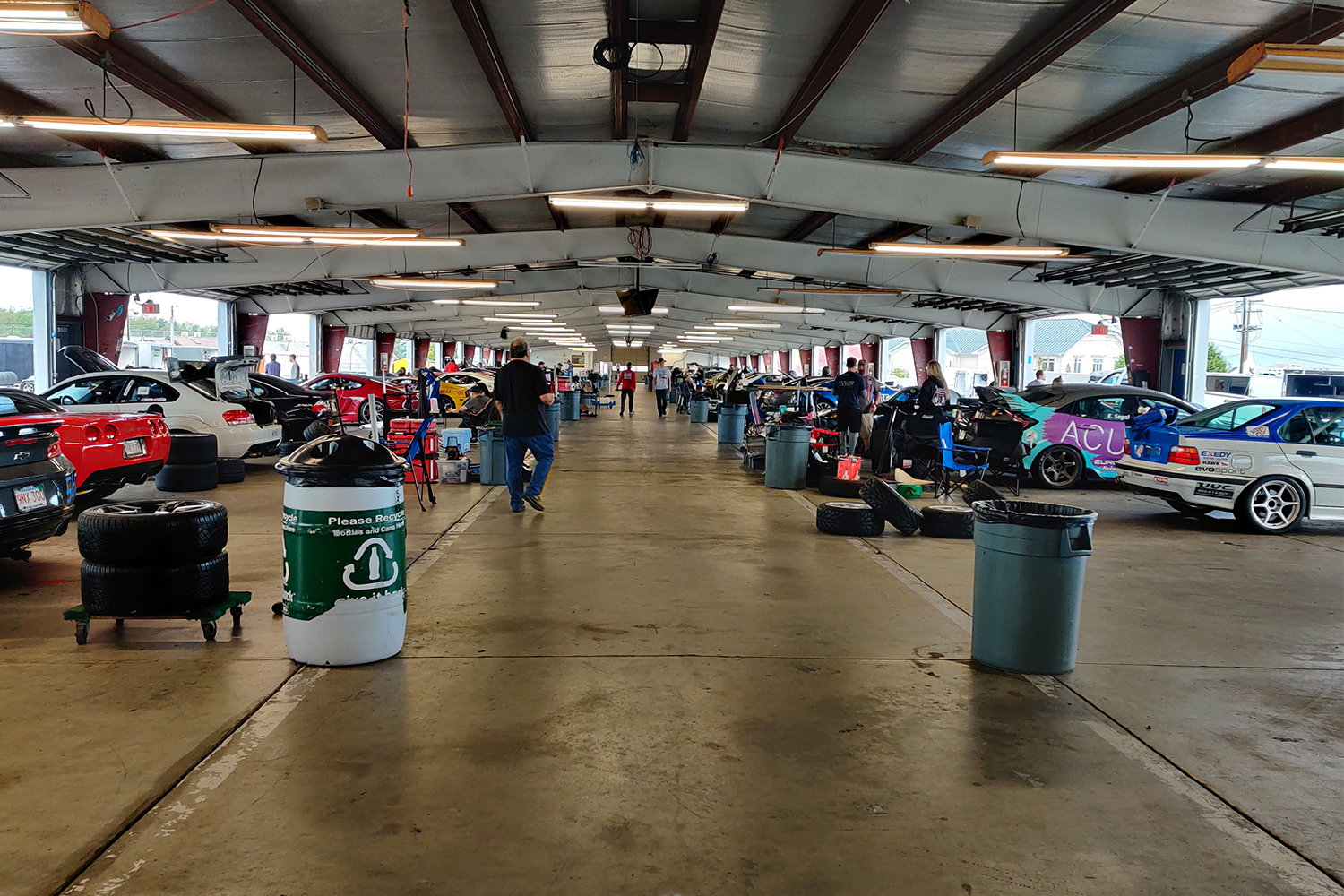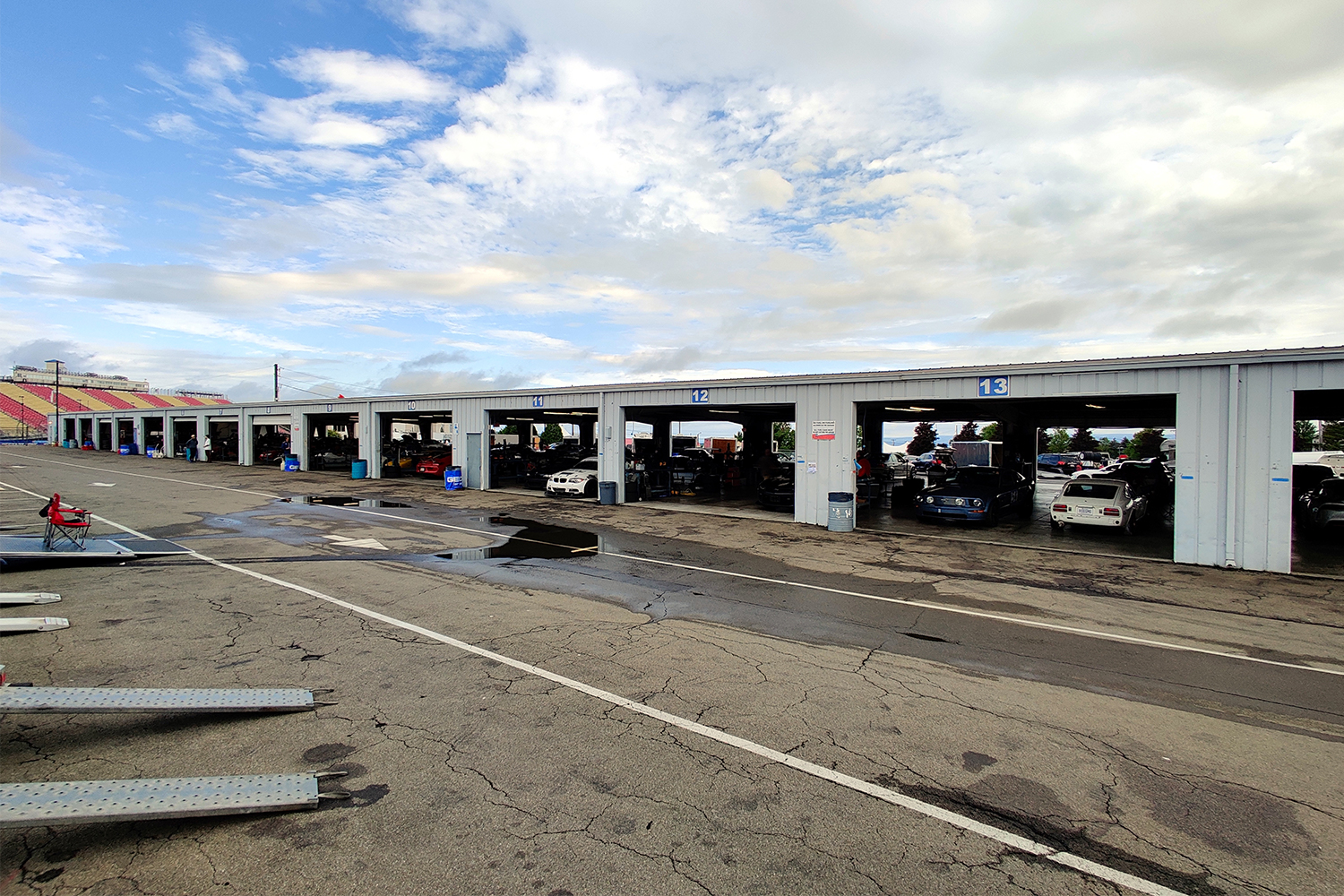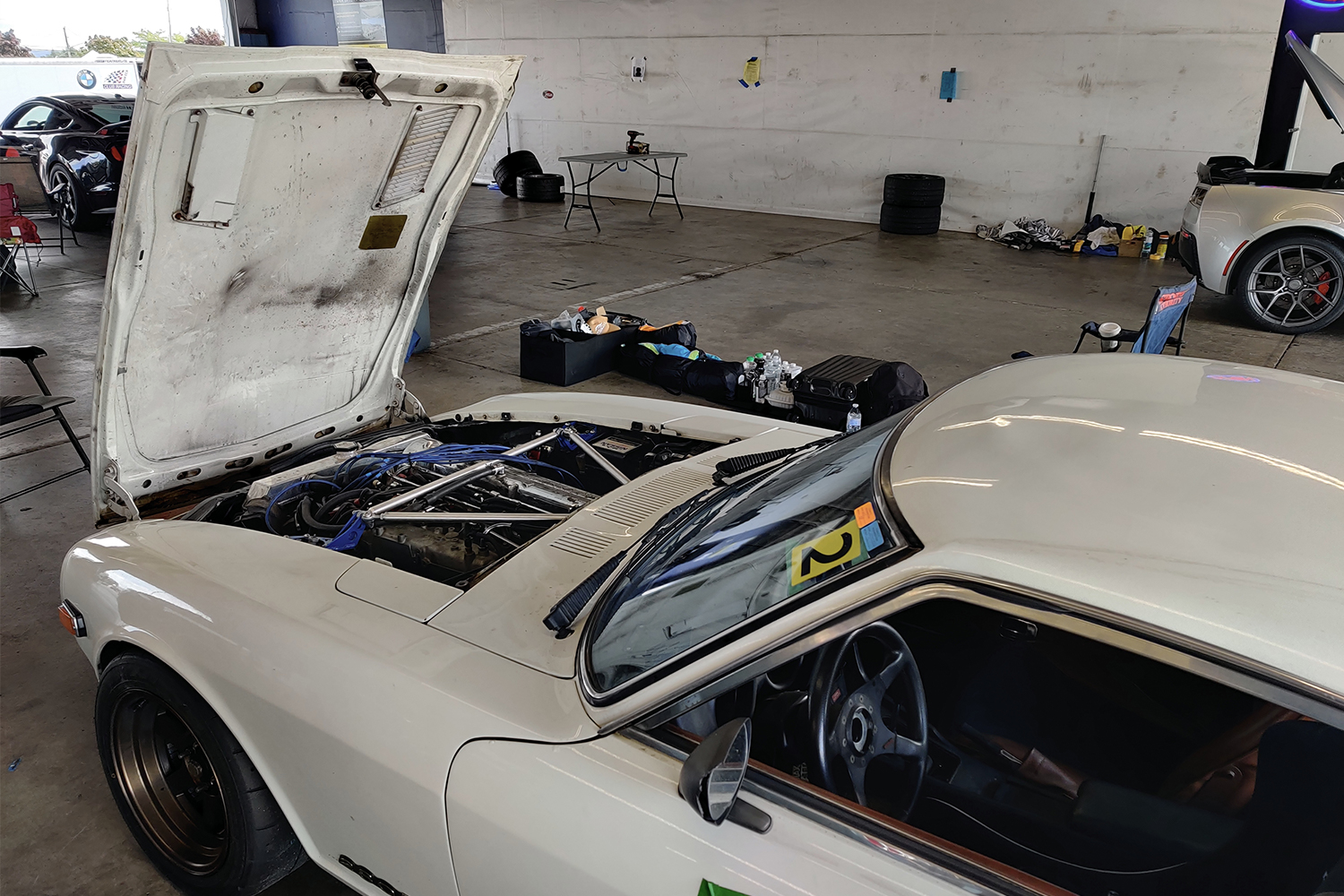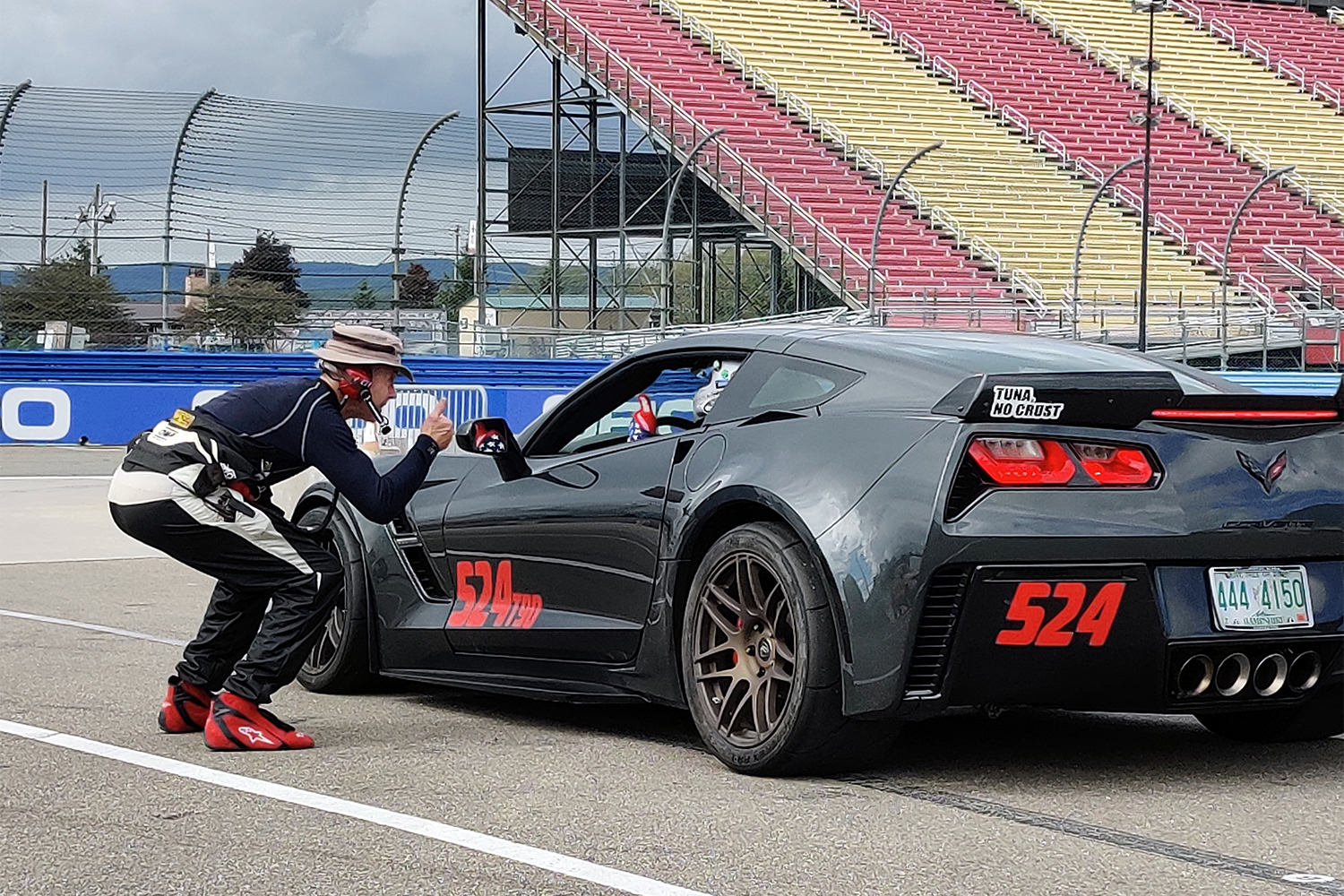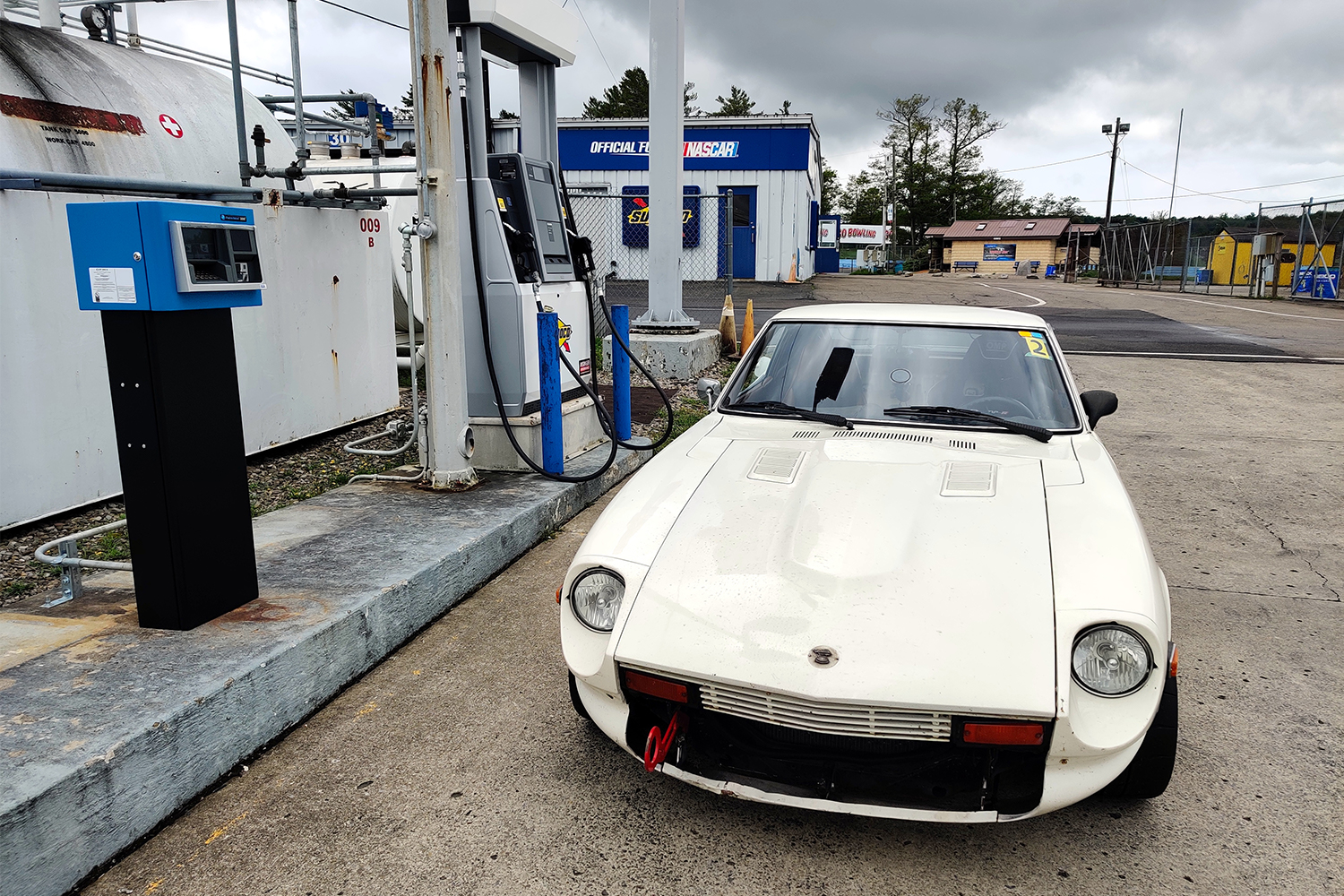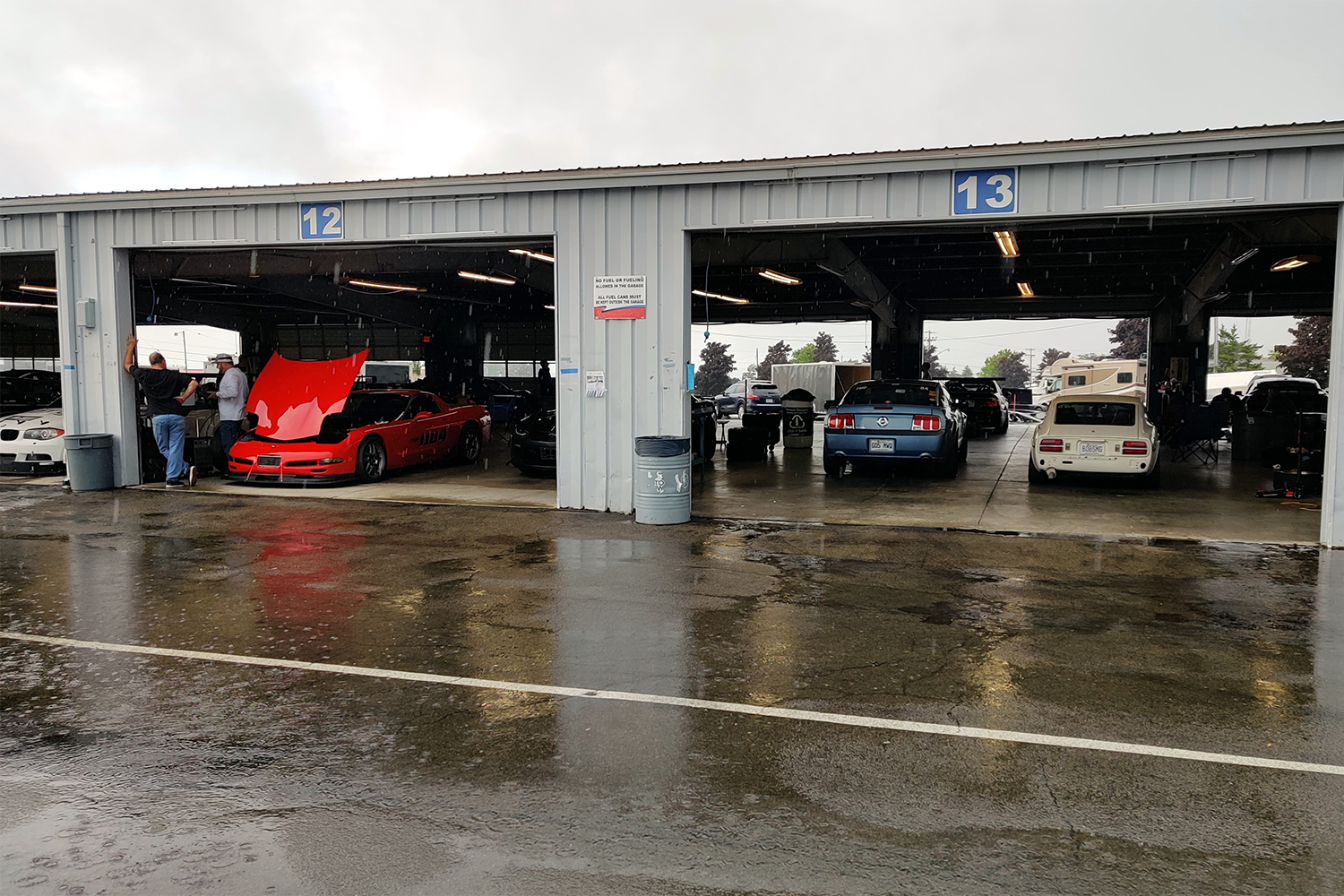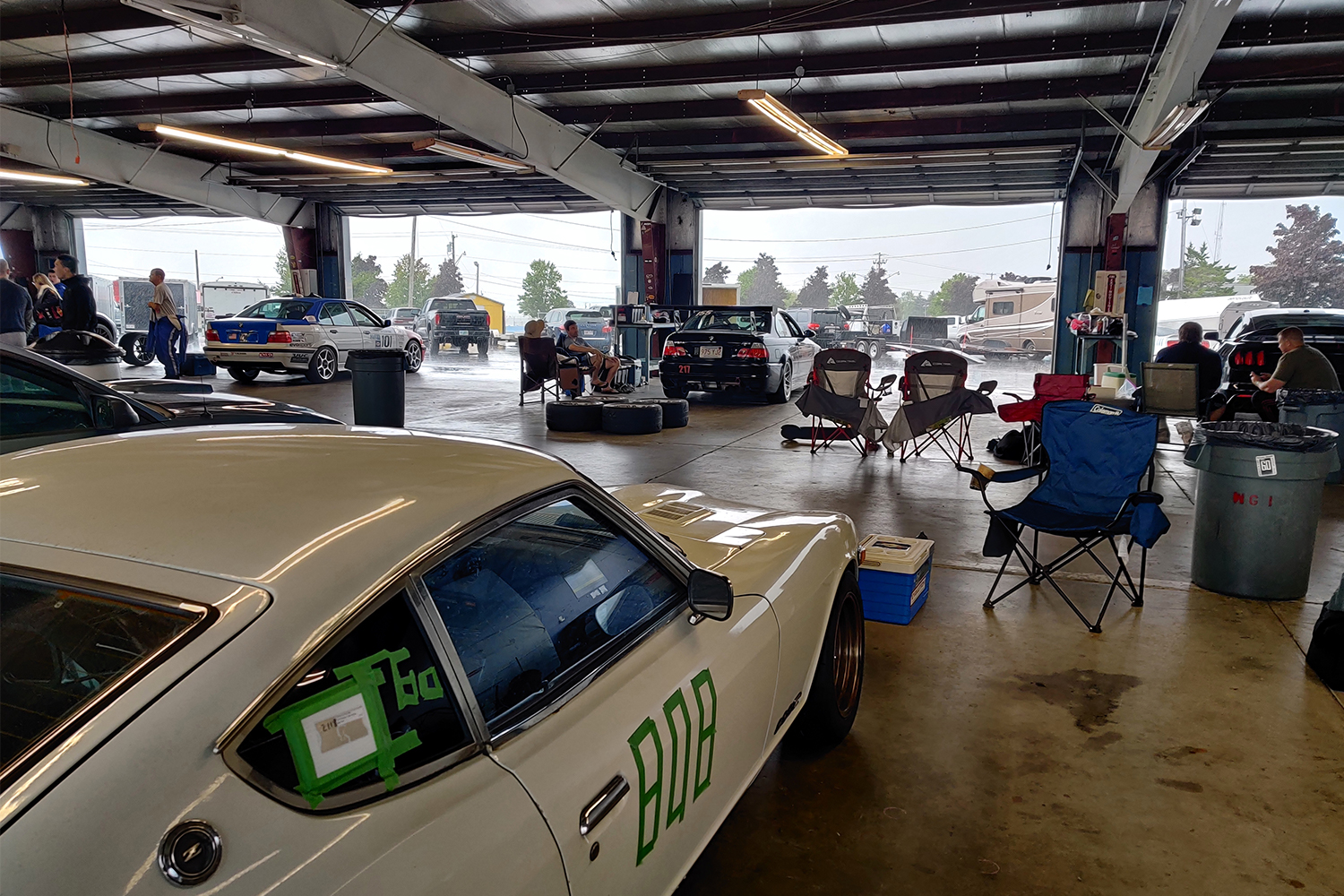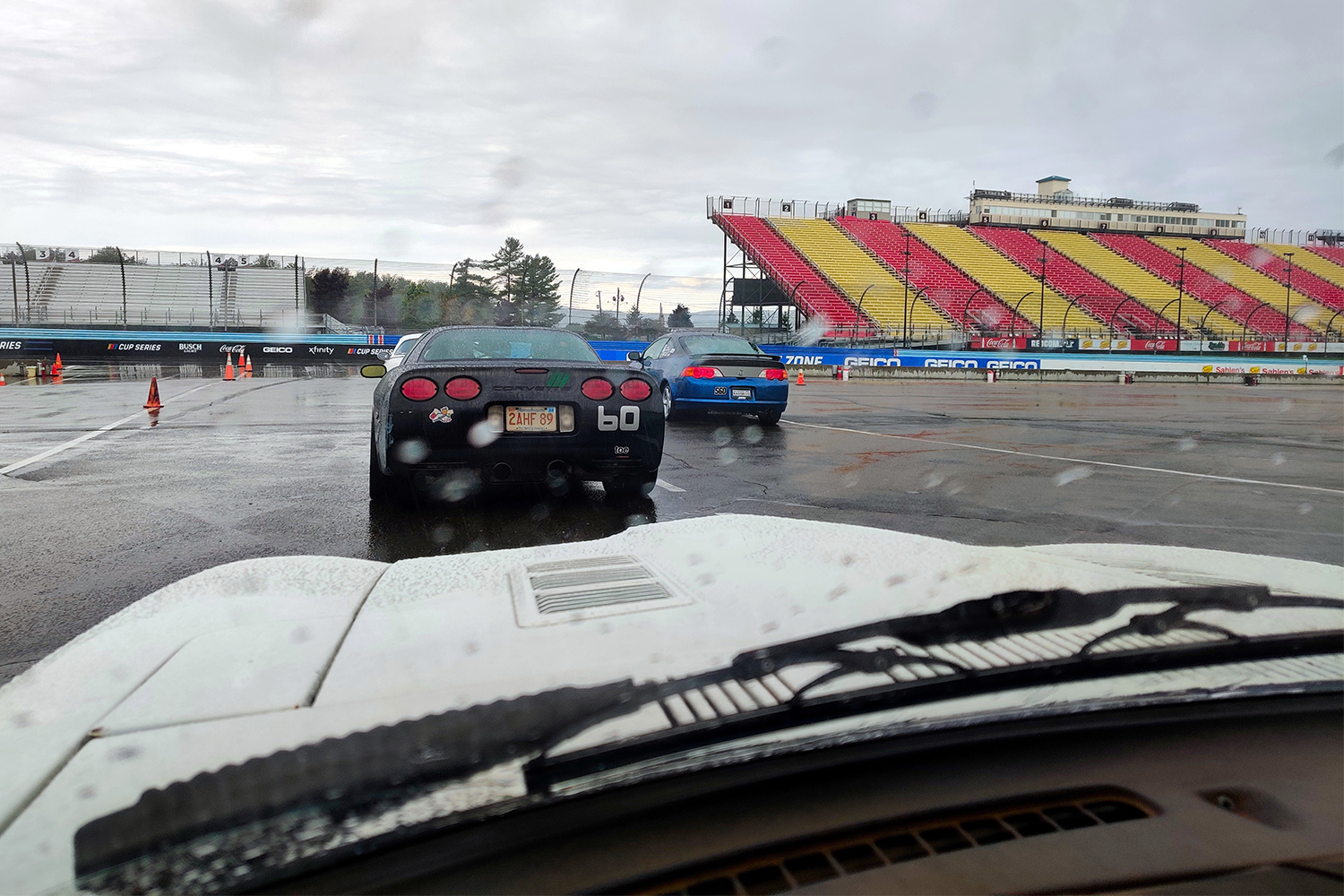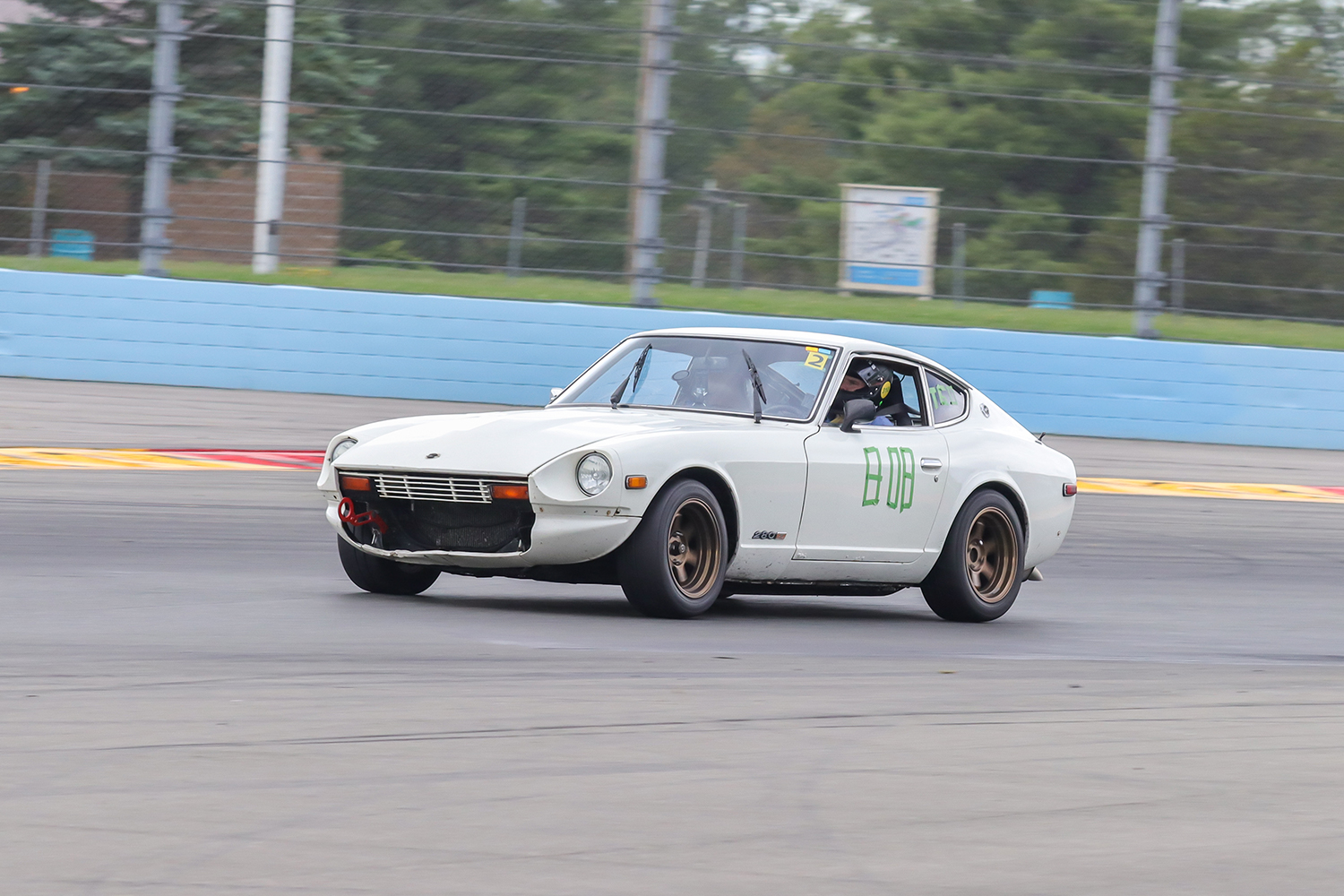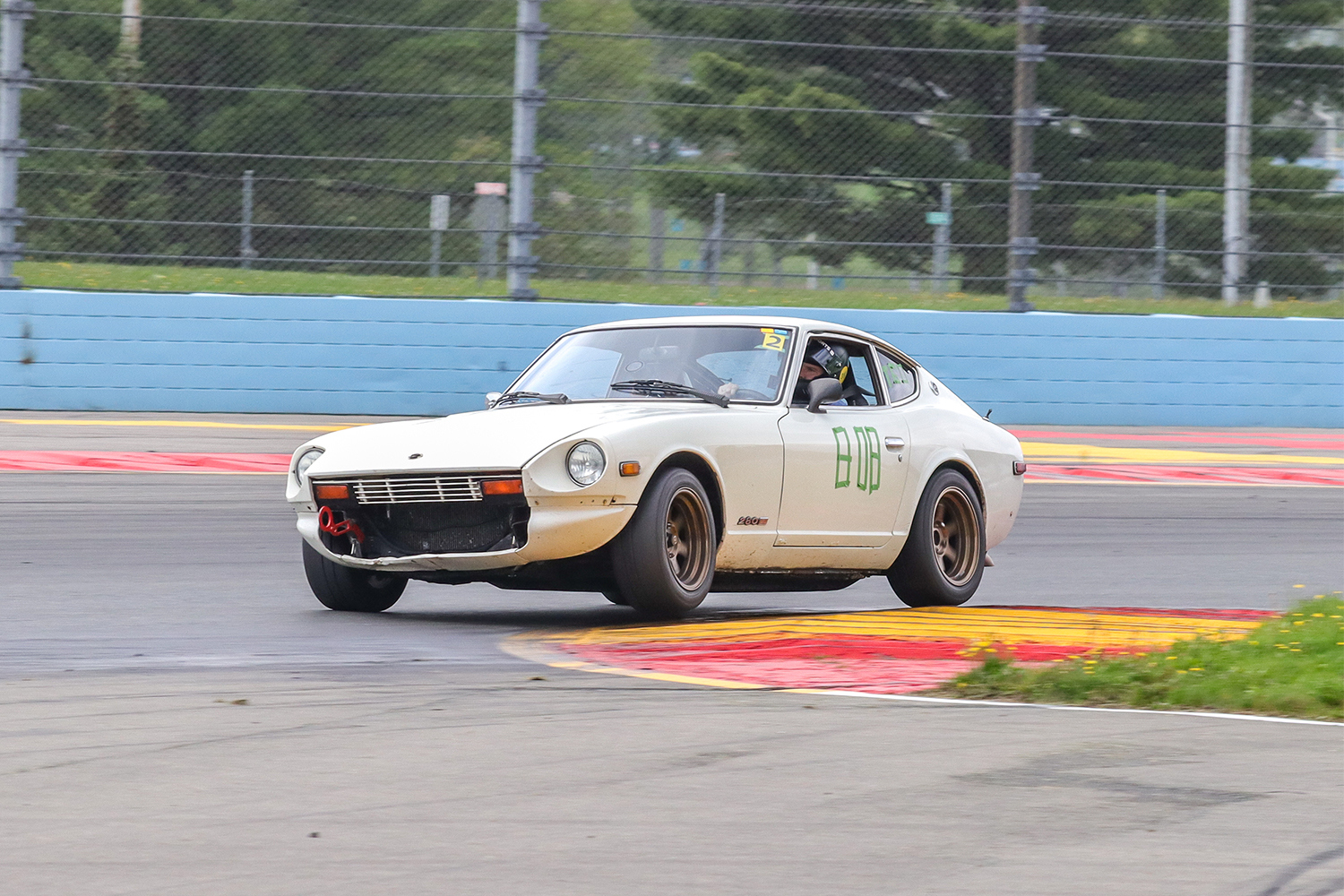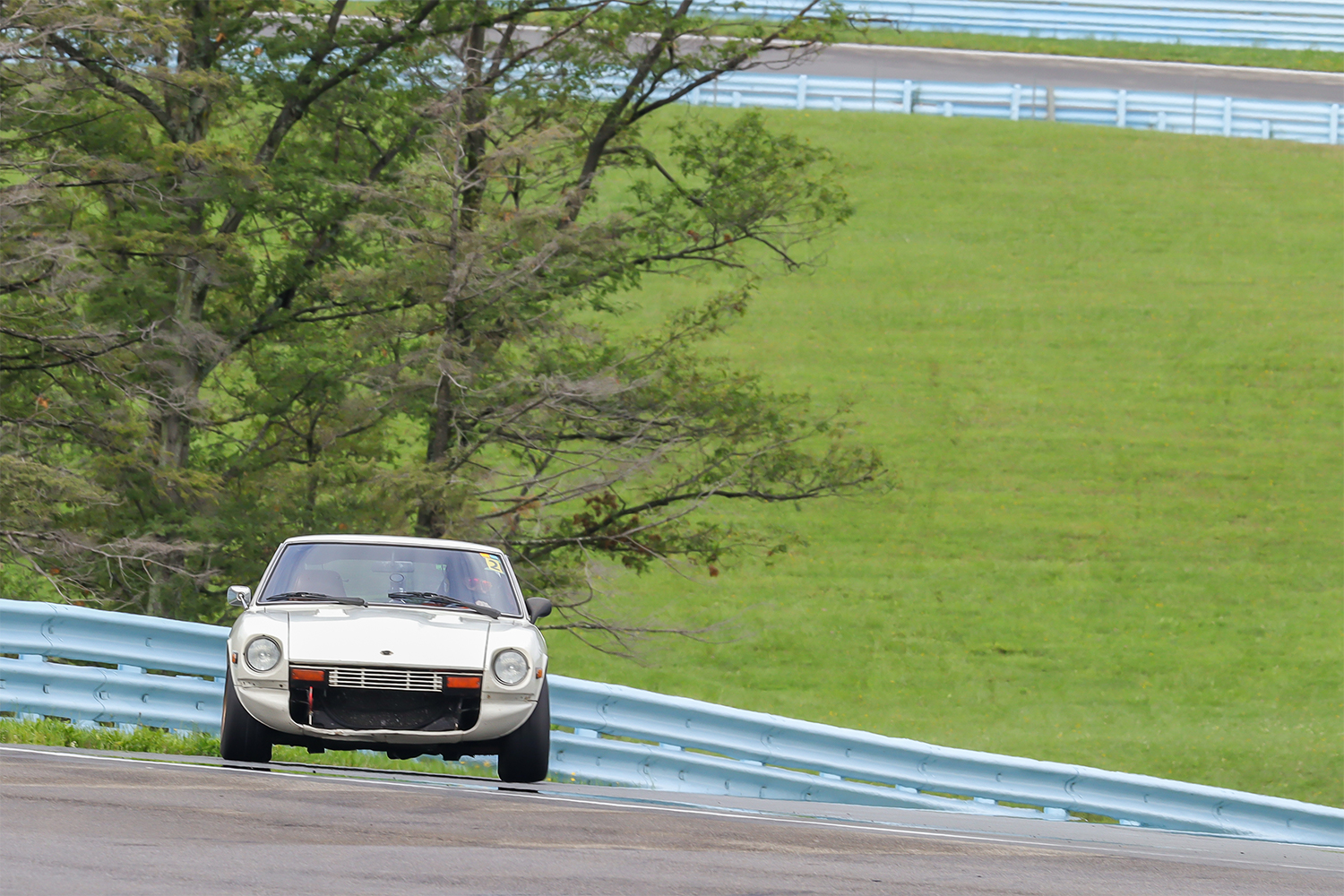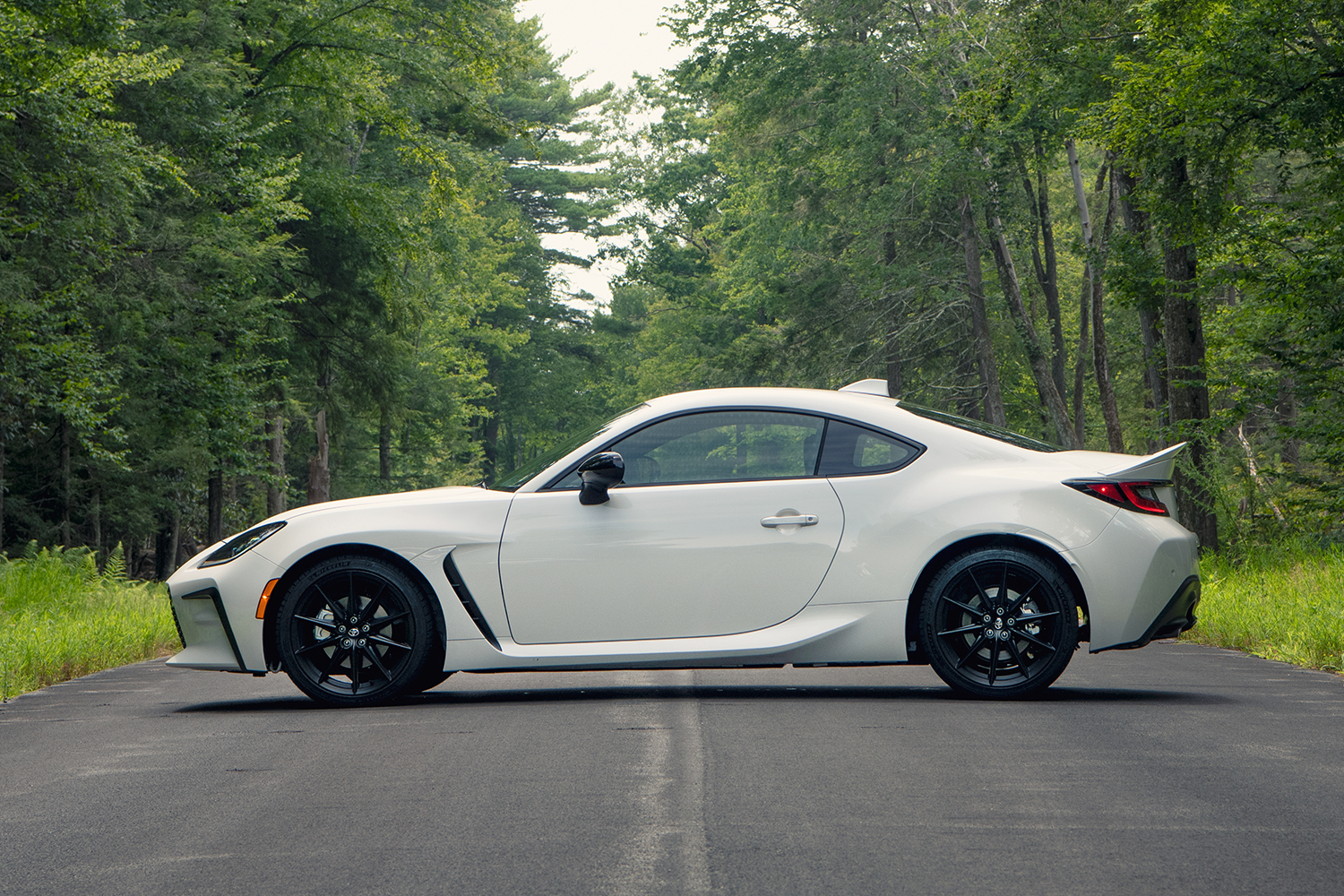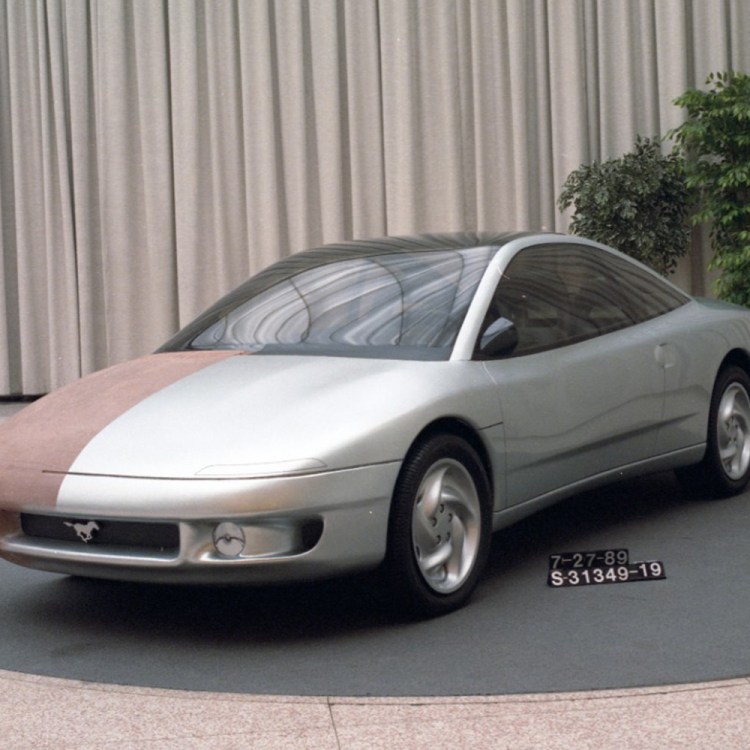One of the best parts of owning a 1978 Datsun 280Z vintage track car is traveling across the Northeast to sample the many fantastic road courses that the region has to offer. New England is blessed with both brand new facilities like Club Motorsports in Tamworth, New Hampshire, and Palmer Motorsports Park in Massachusetts, as well as historic stops such as Lime Rock Park in Connecticut and Watkins Glen International in New York.
Every September, the time trial club I run with the most often — COM Sports Car Club, or COMSCC — arrives in Watkins Glen’s bucolic pastoral setting to spend two days on the full circuit in a mix of driving instruction and beat-the-clock competition. It’s become one of my favorite summer events, and one that’s been denied to me over the past few years due to the COVID-related border closing between Canada and the United States.
With the frontier once again open to international travel, I was eager to get back in the WGI groove, with my father also trailering-up to come with me and test out his own track car (a 2005 Ford Mustang GT) at the iconic circuit for the very first time.
Here’s what it’s like to put a 44-year-old classic through a two-day racing ringer on America’s oldest road course.
Trouble on the Way to the Track
With heavy rain in the forecast I decided to mount a new set of tires onto the Datsun. My existing Nitto NT01 R-compounds had a lot of life left in them, but tread was a different story, and if I was going to tackle a slick surface I needed all of the water channeling I could get to maintain traction.
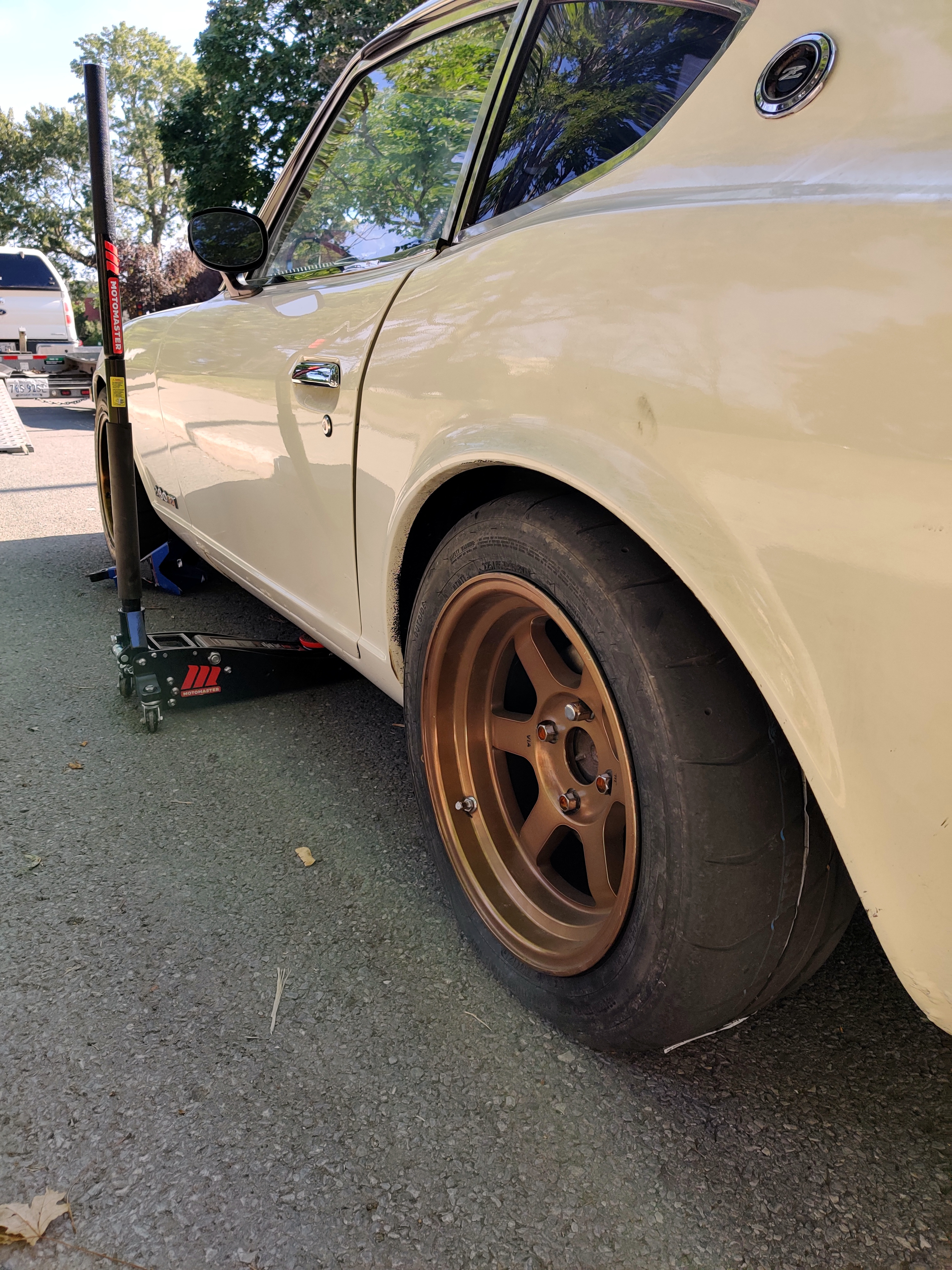
This install posed the first piece of tire-related drama on my trip. Rolling out of the garage Sunday morning, something felt off about how the car was handling (not to mention the fact that it was scraping across speed bumps that it normally cleared without issue). It wasn’t until I got out of my alley and behind my waiting trailer that I discovered the brand new, zero-mile tire on the left rear of the Z was completely deflated.
A few quick phone calls quickly revealed that not a single tire shop on the island of Montreal was open on a Sunday morning. Any repair would have to happen en route at a roadside service center or around the Watkins Glen area once we arrived at the hotel. I quickly mounted my (much more worn) spare, filled the flat up to 40 psi to see how long it would hold air, and then my father and I set off on the five-hour journey.
Did I say five hours? It turns out that the tire gods weren’t finished with us, as my dad’s pickup caught an errant tow strap someone had left on the shoulder, causing a puncture that forced an hour and a half pause on the side of the interstate to change the tire (followed by another two hours at a nearby shop getting both a replacement installed and a new valve put into my leaky Datsun rim). We rolled into the hotel parking about four hours later than planned, but thankfully safe and sound.
The Many Stages of Preparation
A big part of any track event is preparation, especially if you’re driving something as old as my Datsun. I’d had a fairly miserable season with the car to that point, cracking the cylinder head at New Hampshire Motor Speedway in early May, and then having to search high and low for a rebuild candidate (never an easy task with a classic Japanese vehicle). This was my first time on track with the new head, and although there had been a smoky scare involving a burnt-out starter during a valve adjustment the week before, the car had been meticulously inspected by both myself and AGM Performance, the shop that maintains it, in the days leading up to the event.
Proper preparation also means making sure you have the right tools and spares with you should even the best-laid plans go awry. I used to drive my 280Z to each and every event, which meant I was limited in terms of what could fit under its hatch (a surprisingly voluminous storage space that swallowed an extra tire and rim, a full set of tools, a jack, helmet, oil and brake fluid, a torque wrench, a folding chair and an impact gun) and in the front seat (an overnight bag and a cooler). Now that I have allowed myself the grace of towing, I’ve got the space for jack stands and a few extra creature comforts.
COMSCC, like most high-performance driving clubs, does its own technical inspection the morning of the event to run an extra set of experienced eyes over each vehicle that plans to leave pit lane. The first thing my father and I do when we arrive at the track is head over to the registration area and grab our tech sheet, group number and group schedule, before numbering our vehicles and lining up for tech inspection. It’s a smooth process that normally takes no more than 10 or 15 minutes, and it’s typically followed by the driver’s meeting where the track rules, flags and any need-to-know info are provided to all participants.
Tackling Watkins Glen at Full Speed
The watchword of the day at both the driver’s meeting and in everyone’s head was “rain.” A fine mist of fog had enveloped Watkins Glen International for most of the early morning, but the track itself remained dry and stayed that way until the early afternoon. Threatening clouds and conflicting weather reports saw drivers switching back and forth between appropriate tire sets all day, but given that my father and I were running the same set all day we focused on learning (or in my case, relearning) the racing line and getting some clean runs in before the deluge arrived.
Watkins Glen is an exceptionally fast track, with speeds higher than any other circuit where I’ve run my Datsun. With a set of 3.90 gears installed in the rear of my car, my terminal velocity at WGI arrives at the top of the uphill esses, where I hit the redline in fourth gear at around 107 miles per hour. At that speed, my 280Z is faring so poorly in the aerodynamics department that the simple act of putting my hand out the window to point quicker cars by actually sucks the entire vehicle towards the grass on the left of the straight, quickening the pulse while I try to avoid floating the valves.
Despite my limited terminal velocity on the front and rear straights, I find every other aspect of the track endlessly entertaining. Whether it’s banging off the curbing at the entrance of the “bus stop” (the name for a particular chicane on this track) to set-up for the exit into the upcoming downhill corner, trying to find the best line through the hard-braking uphill left-hander before the pit entrance, or willing my right foot to stick to the floor as I power up through the esses, I’m still having a blast even though Watkins Glen is truly designed to reward high-horsepower cars.
This remained true even if on day one I bounced off of the bus stop turtles so hard that it actually popped the Datsun badge off the hood of my car, to be recovered and returned by a fellow competitor doing a track walk later that evening.
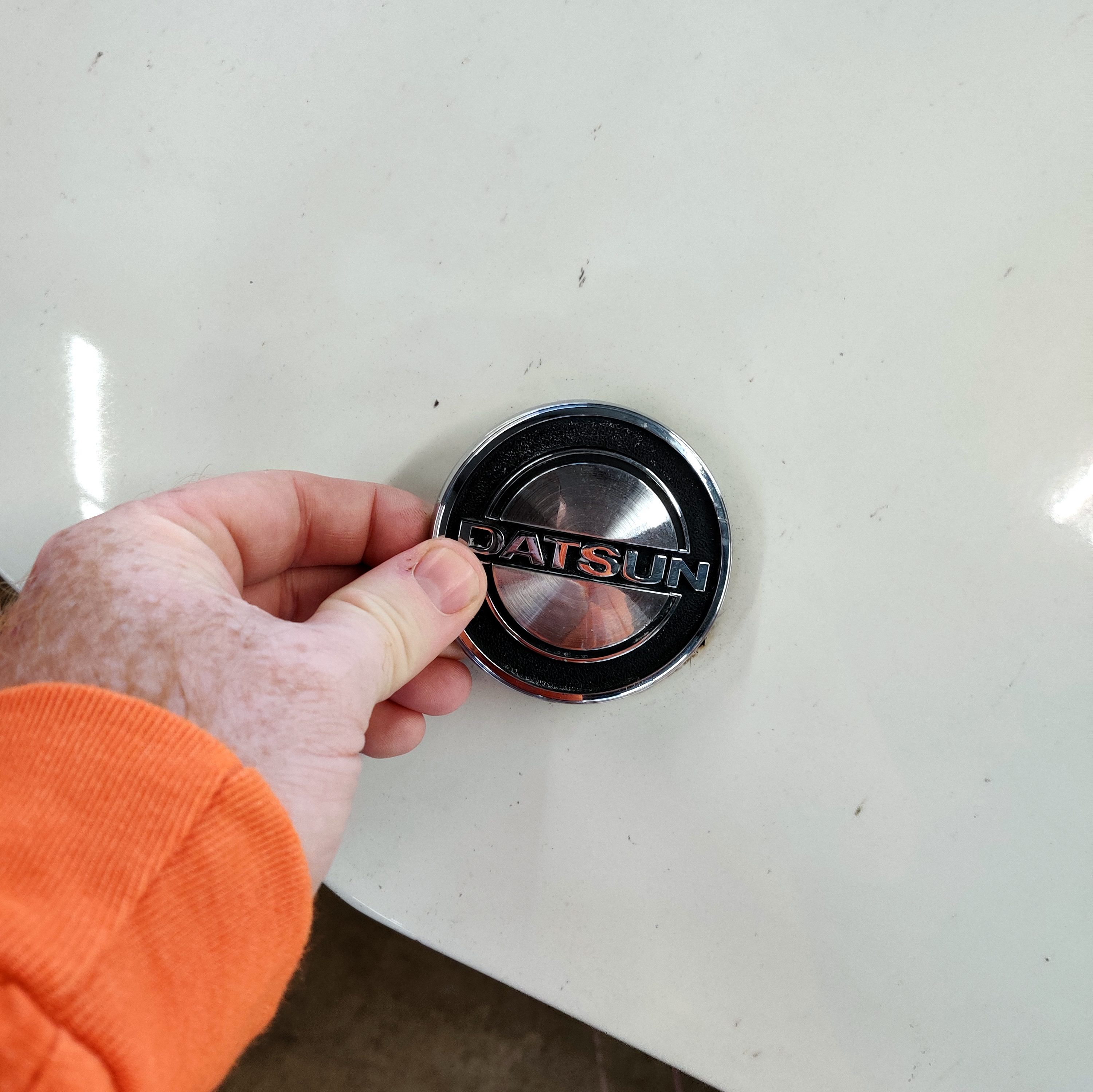
Of course, the definition of “high horsepower” can sometimes vary, as I soon discovered when several vehicles that were previously capable of zooming by at past events without requiring me to lift off the throttle ended up struggling to get around me on some of the shorter passing zones. A post-session conversation with the driver of a Toyota 86 had me realize that my new head most likely gave me a torque boost that I now needed to take into account with each point-by so I could make sure that everyone had a safe amount of space to get past my car.
Sprinting in the Rain
In the early afternoon the rain arrived, and everything changed. Seeing past my windshield spatters was one thing, but dealing with the layer of oil, coolant and other dropped fluids that rose from the asphalt to sit on top of the track surface was an entirely other concern. The first session to get hit by light precipitation is almost always the most slippery until this slick washes off, and it often requires finding a different way through each corner in order to avoid the heavily-trafficked apex and its accumulated traction hazards. These areas are subjected to substantial rubber buildup, which makes them sticky in the dry but often far more slippery when wet (pushing the “rain line” outside the boundaries of where one normally drives).
While that particular cloudburst was brief, a much harder rain washed out our final session of the day entirely. The tires both my father and I were using weren’t rated for hurricane conditions, and tomorrow is always another day…
A very, very rainy day, as it turned out. A soaked track greeted all participants in the morning, which was given over to a pair of practice sessions prior to the afternoon’s time trial. Still, it was an improvement over the previous evening, and we headed out onto a surface that presented a constantly shifting set of challenges. I was thankful to have a full tread tire under the car, which helped enormously with the inconsistent grip levels, really only hydroplaning under hard braking and giving me confidence to add throttle to the point where my car’s limited-slip differential made short work of potential wheel spin.
Standing water at the exit of the bus stop section claimed more than a few spin victims, but as the track began to dry out from the friction of our rubber it became a game of looking as far ahead as possible to scout out dryer sections, stitching together an ever-changing path around WGI from both the accepted rain line and the faster racing line. My lap times got quicker as the morning went on and the expanses of now-clean asphalt became more eager to play nice with R-compounds. My father had similar luck, although he had to be much more careful doling out the additional power produced by his Mustang’s V8 engine (and dealing with the car’s less forgiving solid rear axle suspension).
By noon, it was time for us to pack it in. It’s a long, nearly 400-mile drive home, and after our tire shenanigans on the way down (and a bleak storm forecast), my father and I wanted to give ourselves a margin of error on the way back. Neither of us are competitive in the COMSCC time trials championship, having built our cars for personal pleasure rather than according to a strict class rulebook. More importantly, both of our vehicles were still running strong, with no gremlins, breakage or unusual behavior to cast a mechanical pall over the proceedings.
Never Stop Learning
One of the best aspects of driving a track car that’s older than I am is that it forces me to stay focused. As a driver, there’s very little margin for error if I want to turn in a fast lap: with no traction control, stability control or anti-lock brakes available, there’s a penalty to pay if my attention wanders at the wrong moment. Driving my Z on a road course is really the only time in my life when I’m not thinking about anything else but the task at hand, and being that present in the moment is an almost Zen-like experience for me.
Some drivers might look at a rainy two days at WGI as a disappointment. I approached it more as an opportunity to further stretch my skills behind the wheel by forcing myself to deal with difficult conditions in a car that relies entirely on my own inputs and judgment to carry that much more speed through the corner on the next go-round. I’m lucky to have found a community like COMSCC that’s filled with other like-minded individuals looking to make the most of every second spent on-track, regardless of what they might be piloting.
This article was featured in the InsideHook newsletter. Sign up now.
